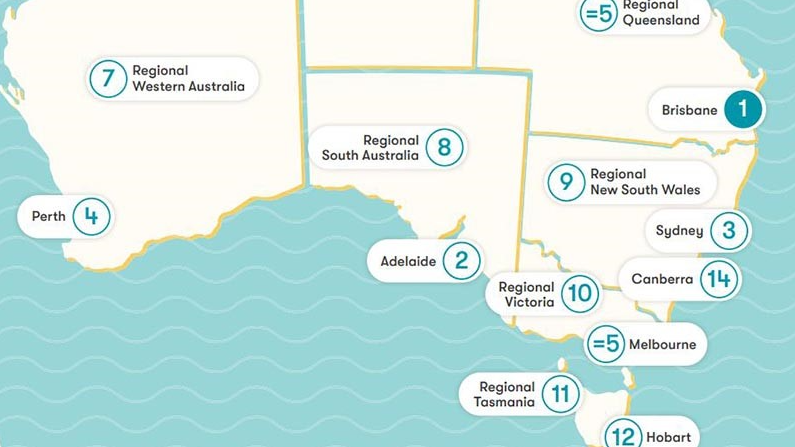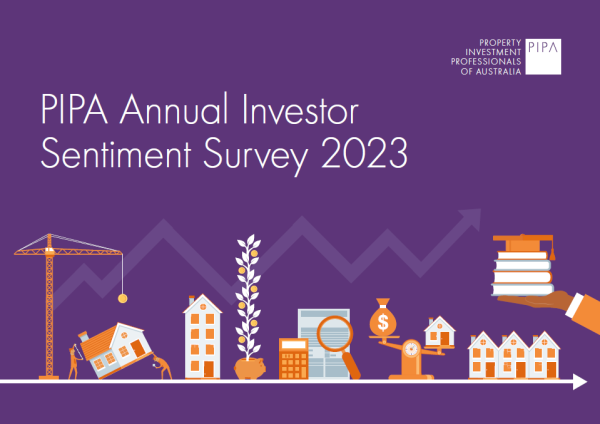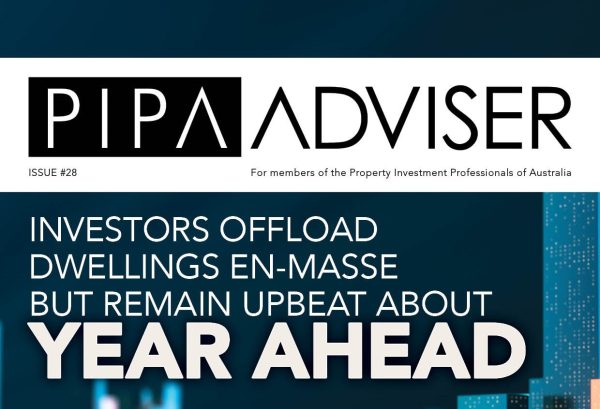Property market update: Sydney, May 2020
Jun 2020Karen Millers
Categories
Location ReportsMedia releasesNational market updatesPersonal advisersPIPA AdviserPIPA Annual Investor Sentiment SurveysPIPA Member ProfilesPIPA video updatesPIPA webinarsPodcastsProperty advisersProperty newsLatest Articles
‘More chance of winning lotto’ than housing targets being met
PIPA Member Profile | Amanda Turner, Opulence Property
Despite claims of up to 30 per cent decreases in property values, Real Estate Institute of New South Wales (REINSW) president Leanne Pilkington said investors would be better off looking at the data instead of the doom-and-gloom headlines.
According to her, the analysts who are now saying that the market needs a ventilator are the same ones that were previously saying that the Australian property market is in a boom with 80 per cent clearance rates.
“So, the way I do the maths, the distance between apparent boom and bust is 2.1 per cent,” she said.
Ms Pilkington further argued that a lack of sellers is helping keep the value of properties higher.
At the end of the day, property is a long-term asset, which means that it does not have the same volatility that the share market has. More importantly, property puts a roof over heads. As it delivers one of the most basic human necessities, it’s become one of the first things that people buy and the last that they sell, Ms Pilkington highlighted.
However, as selling a house is not the first thing an investor does when they fall into financial trouble, the current stability seen in the property market must just be the delay before the inevitable downturn.
Property prices and construction activity are expected to fall throughout 2020 and into 2021, before a “modest” recovery in the back end of 2021, according to ANZ Research.
Further, with the COVID-19 crisis prompting the closure of borders, new overseas arrivals would be limited, curtailing the largest source of population growth. As a result, demand for housing will be further hindered.
“Net overseas migration currently accounts for around 240,000 people or nearly two-thirds of Australia’s population growth. The federal government estimates Australia’s net overseas migration will fall by more than 85 per cent in 2020-21 (from 2018-19 levels) due to international travel bans instituted in response to the coronavirus,” ANZ Research noted.
“This drop in population growth will remove a major driver of economic growth and housing demand, at least for a period.”
Moving forward, Sydney and Melbourne markets are expected to be most impacted by the decline in population growth.
“In the year to June 2019, Sydney’s population grew by 87,000, with 85 per cent of those newcomers being overseas migration. In Melbourne, the numbers are also significant, with 77,000 overseas migrants accounting for 68 per cent of the total population growth of 113,000,” ANZ Research noted.
Still, property experts are positive that the pain in the property market will be short-lived and property prices will ultimately bounce back post-pandemic.
In a research conducted by the Property Investment Professionals of Australia, which analysed annual median house price and index data for seven consecutive years, including the start of each recession or economic downturn from 1973 to the GFC, it was determined that five years after each of the recessions or economic downturns over that time period, capital city house prices saw a significant increase.
While some areas outperform others due to a variety of economic reasons, including employment, overall, capital cities continued to grow, according to PIPA chairman Peter Koulizos.
For instance, five years after the recession of 1973 to 1975, Sydney median house prices had increased 100.7 per cent, followed by Perth and then Brisbane, as the economy grew after the downturn.
A few years later, following the economic downturn of 1982 and 1983, Melbourne led the property pack with median house price growth of 67.7 per cent, while other capital cities were not far behind with growth in the 50 per cent to 64 per cent range.
“The moral of the story is don’t panic. Property has shown its resilience through economic shocks before, and we have no reason to expect it won’t do so again,” he said.
Australia stands as one of the very few countries that have a balanced budget. Further, the country also records the lowest government debt in the world, which should provide investors with some comfort that the country is in a strong position to cushion the impact of the COVID-19 outbreak.
Property values
SQM Research’s monthly report showed the combined capital asking prices increased by 0.7 per cent for houses and 0.1 per cent for units over the month to 5 May 2020.
Median unit asking prices are now at $574,900, while median houses asking prices are now at $994,300.
Compared to a year ago, the capital city’s asking prices posted increases of 9.4 per cent for houses and 3.0 per cent increase for units.
The strongest monthly growth was seen in Sydney house prices with a 1.1 per cent increase, as well as in Melbourne’s unit market, which saw a 1.0 per cent increase.
Over the month, some capital cities recorded marginal asking price increases, with the exception of Perth, Canberra and Hobart, which all recorded declines for both houses and units.
Melbourne, Adelaide and Darwin were the only capital cities to record increases in both house and unit prices.
Despite the positive figures and sentiment in the market, CommBank assumes an 11 per cent reduction in the prices of residential property nationally due to the pandemic, while a prolonged shutdown and a worsening economic climate would see falls nearly trip to 32 per cent.
In a statement made to the ASX, CBA announced it had set aside $1.5 billion to cover potential losses from the COVID-19 recession, taking its total provisions for bad and doubtful debts to $6.4 billion.
“Today’s announcement of an additional credit provision of $1.5 billion for the potential longer-term impacts of COVID-19 further reinforces our already-strong balance sheet settings,” CBA chief executive Matt Comyn said in a statement.
The big four bank also told markets that it had 144,000 consumers taking up the option to defer home loans with a combined balance of $50 billion.
New research by PRDnationwide has highlighted the “large discrepancy” between the average state loan and median house price in capital cities despite a lower cash rate and more lenient lending practices.
During the December quarter, for instance, Sydney recorded a median house price of $1,142,212 and an average state loan of $592,338, while Melbourne saw a median house price of $859,500 and an average state loan of $493,471.
Ultimately, finding an affordable property option in capital cities can be difficult, especially for first home buyers, the PRD report noted.
“Despite a lower cash rate and more lenient lending practices, there is still a large discrepancy between the average state loan and median house price in capital cities. For example, 51.9 per cent in Sydney and 76.1 per cent in Brisbane,” PRD said.
“Further attributing to the challenge are capital cities, which have experienced solid growth in their median house prices, with the December quarter 2019 reporting a weighted average Australian median house price of $775,918, representing annual growth of 5.8 per cent.
“The Australian median family weekly income grew by 2.5 per cent over the same period of time, resulting in the home affordability index declining by -4.3 per cent. Although housing affordability in major capital markets continues to be challenging, regional areas should not be dismissed.”
Supply and demand
According to CoreLogic’s forward indicators, newly advertised properties were up 4 per cent for the week ending 24 May, giving an indication sellers were re-entering the market.
Further, preliminary auction clearance rate was recorded at 70.9 per cent during the same period – the highest preliminary auction clearance for the combined capital cities since early March.
Ms Pilkington points to the positive clearance rates as a sign the property market has not fallen as far as predicted.
Looking into capital city markets, clearance rates were highest in Sydney (77.9 per cent), followed by Canberra (73.3 per cent), Melbourne (72 per cent), Brisbane (45.9 per cent) and Adelaide (38.5 per cent).
In volume terms, 613 homes were taken to auction, up week-on-week from 400.
However, volumes were down significantly when compared with the same week in 2019, in which 2,055 homes were taken to auction.
CoreLogic noted that it expects volumes to pick up over the coming weeks in response to the lifting of the on-site auction bans.
“Given it’s been a few weeks since the ban for on-site auctions and inspections were lifted, agents and vendors have had the chance to start implementing marketing campaigns, and we are likely to see volumes gradually increase each week,” CoreLogic stated.
Prime Minister Scott Morrison has acknowledged the threat that a COVID-induced decline in migration could pose to residential property market activity as a result of travel restrictions imposed to curb the spread of COVID-19.
Mr Morrison made specific reference to the impact of subdued levels of migration on the residential construction sector, adding that the issue has been a “key topic of discussion” between all levels of government.
The government is expecting net overseas migration to fall to approximately 34,000 in 2020-21, well below levels needed to maintain GDP growth – estimated at around 160,000 to 210,000.
“It’s a short-term gap, but it’s going to be one of the real impacts of this crisis because our borders aren’t going to open up any time soon,” the Prime Minister said.
According to Domain economist Trent Wiltshire, subdued population growth, particularly net over search migration, would be one of the main drivers of prolonged weakness in the housing market as lower immigration means reduced demand for property, and reduced demand will consequently put downward pressure on prices.
Other factors are rising unemployment and concerns about job security, expectations of price falls, larger households due to people wanting to save money, some forced sales, and restrictions on transacting real estate.
“Property sales are likely to decline by even more than prices,” Mr Wiltshire highlighted.
Rental market
While experts have yet to agree on the magnitude of the impact of the COVID-19 pandemic on the property market, a more immediate effect has been seen in the Sydney rental market, where listings have increased and rents have fallen by around 4 to 5 per cent since the crisis began, according to Herron Todd White.
The current trend has been partly attributed to a number of short-term holiday rentals coming onto the market and properties that have been withdrawn from sale by their vendors with owners who are now attempting to rent them out.
Areas like Sydney’s eastern suburbs, for instance, have long been a hotspot for Airbnb and short-stay accommodation servicing a short and medium-term international market.
Typically one of Australia’s strongest rental markets, now the area is experiencing an oversupply. The exodus of tourists coupled with the short-term rental ban has forced landlords to seek longer-term tenants.
Most commentators are predicting that rents will drop in the coming months due to less tenant demand and more supply.
Landlords holding properties near universities or in areas like North Ryde, which usually attract a high percentage of international students, are now on the hunt for tenants and may be forced to discount rents, according to Binnari Property managing director David Hancock.
Further, while there are signs that restrictions on domestic tourism may be relaxed in the coming months and international travel between Australia and New Zealand may even be permitted, it is unlikely that tourists further afield will be able to enter the country until the virus is contained in more countries or until there is a COVID-19 vaccine.
“Sydney is arguably the most volatile rental market in Australia right now. Vacancy rates had already reached a record high late last year. COVID has compounded things. The 28,734 vacant dwellings advertised in Sydney as at end of April 2020 is enough to accommodate an entire city the size of Coffs Harbour,” Propertyology’s Simon Pressley explained.
“Sydney CBD currently has a 13.8 per cent vacancy rate and Parramatta is 4.9 per cent. Darlington, North Ryde and Kensington are among the problematic pockets.”
Until international students are able to return and international travel commences, the rental market is likely to be affected significantly more in certain capital city locations, Mr Hancock added.
Across capital city markets, inner-city Melbourne and Sydney are being impacted the most, with CoreLogic data showing rental listings rising by 36.2 per cent and 34.1 per cent, respectively, between the week ending 22 March and week ending 26 April.
Sydney-eastern suburbs’ rental listings increased 22.8 per cent, followed by Adelaide-Central and Hills at 13.4 per cent, Warrnambool and south west at 13 per cent and the Gold Coast at 12.4 per cent.
On the opposite end, the Sunshine Coast appears to have fared the COVID-19 storm, with rental listings increasing by only 0.2 per cent over the said period.
Melbourne-north east saw rental listings increase by 1 per cent, Sydney-Ryde by 2.5 per cent, west and north west by 2.6 per cent, and Hunter Valley (excluding Newcastle) and Brisbane inner-city both by 2.7 per cent.
Ultimately, locations with a high supply of investors and renters may fall harder, especially when compared with tightly held markets with a high percentage of owners and limited rental supply.
Still, at this stage, the majority of rental markets across Australia are holding up reasonably well, as most property managers surveyed by Binnari Property reported that approximately 90 per cent to 95 per cent of tenants are continuing to pay their rent in full.
According to Mr Hancock: “Given the government assistance to both tenants and landlords during this period, it’s unlikely we’ll see a situation where a flood of rental properties hit the majority of our property markets.”
In addition, Mr Pressley said that the current pain felt by the property market is at its peak and is likely to fall in the coming months.
“It’s our view that, while it’s certainly possible that we’ll see further COVID-related increases in vacancy rates across Australia, the end of April levels are likely to be close to their peak. With governments now relaxing isolation measures, we anticipate that markets will stabilise as human movement increases,”
2020 outlook
While the current data around transactions may present a bleak outlook for the wider property market, there’s “certainly no need for particular concern or panic”, La Trobe Financial’s chief investment officer Chris Andrews said.
According to him, the nature of the property market at present is “surprisingly robust” despite the economic downturn driven by COVID-19.
Most of Australia’s house prices continued to grow through April, albeit coinciding with a sharp drop in purchasing activity.
The mixed signals have led La Trobe Financial to no longer regard monthly price data “as especially representative or useful”.
“The property market is in hibernation, and conventional price signals – like auction clearance rates and the things we often look at being really useful leading indicators – for the time being, they are sidelined,” Mr Andrews said.
While commentary and analysis around the property market will continue, he advises investors to “always remember when you are reading that – it’s based on a small number of unusual transactions”.
Moving forward, as lockdown restrictions continue to ease, housing supply “is likely to be sticky and unresponsive, as it traditionally is in Australia”.
Investors can expect a decline in approvals to accelerate over the next few months as banks restrict credit to developers and prospective purchasers put plans on hold, which will then help put an effective floor under house prices.
Even with a conservative economic outlook, Mr Andrews predicts house prices will retrace by “about 8 to 12 per cent”.
“When that’s compared to the increases seen in Sydney and Melbourne just over the last 12 months, where Sydney was up 14.3 per cent and Melbourne was up 12.4 per cent, property holders generally have substantial buffers in place,” he said.
Hotspots
Investors who are concerned about being priced out of Sydney are being advised to look a little further out, with Sydney’s surrounding suburbs still offering value for first-time investors, Thrive Homes general manager Janelle Goulding said.
According to her, “bricks and sticks” constructions in Sydney’s suburbs are not only cheaper for first-time buyers, but they also are in growth areas, meaning they create stronger investment opportunities.
“Land supply has been a big issue for affordability. Now, we have the infrastructure with the government coming in and the land opening up. These areas such as South West Sydney are the real growth corridors.”
“So, for an investor that wanted to get into an investment for say $600,000 but wanted good capital growth, they should look at areas like Elderslie, Spring Farm, Marsden Park, Box Hill,” Ms Goulding said.
Ms Goulding highlighted the importance of buying in areas that are close enough to the city that families want to live there in an apartment, but far enough away that first-time investors can still afford the place.
“If you’re looking at your portfolio, look at somewhere where infrastructure is coming in, where people are still happy to commute to the city,” she highlighted.
Meanwhile, the PRD Resilient Regional Areas report examined regional areas in Queensland, Victoria, NSW and Tasmania to highlight the most resilient regions amid the uncertainty brought about by the COVID-19 pandemic.
While capital city markets continue to offer viable investment opportunities, regional property markets tend to be more resilient due to being slightly more insulated from economic shocks, the report noted.
Among the criteria used to select the most resilient regions are affordability, property trends, investment, project development and unemployment rate.
Emerging as winners are Douglas Shire, Cairns Region, Tablelands Region and Livingstone Shire in Queensland; Upper Hunter Shire, Singleton Area and Greater Hume Region in NSW; Greater Bendigo City, Moyne Shire, Bass Coast Shire and South Gippsland Shire in Victoria; and Kentish Municipality in Tasmania.
“The Australian property market is made up of many ‘micro-markets’, each performing at its own individual pace dependent upon demographics, population growth, economic structure and fundamentals, and local/state government policies,” the PRD report noted.
Affordability also attracts investors as the state average loan in regional markets only makes up between 51.9 per cent (Sydney) to 76.1 per cent (Brisbane) of the median house price in the capital cities.
Further, many local/state governments are prioritising regional areas growth over the past five years.
Bianca Dabu, Smart Property Investment, 4 June 2020
https://www.smartpropertyinvestment.com.au/research/21199-property-market-update-sydney-may-2020




